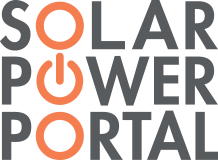
The battery energy storage system would be co-located adjacent to SSE Renewables’ substation at the 18 turbine Richfield Wind Farm in Bridgetown, County Wexford. Image: SSE.
SSE Renewables has begun a public consultation for its proposed 21MWp solar photovoltaic (PV) array and 10MW/2hr battery energy storage system (BESS) facility in Ireland.
The announcement follows a fleet-wide assessment by SSE Renewables of its existing onshore wind farms to determine possible co-location sites.
The proposed solar farm would be built in the townlands of Hooks and Yoletown, whilst the BESS would be co-located adjacent to SSE Renewables’ substation at the 18 turbine Richfield Wind Farm in Bridgetown, County Wexford, which has been operational since 2006.
Public consultation will open to members of the public tomorrow (26 January) to gather views from local people in County Wexford.
Project development will also depend on Ireland’s current grid connection consenting regime facilitating ‘hybrid’ technology grid connections to allow for the co-location of generation sources, added the renewable generation company.
Last year the Irish Government launched a consultation to create a policy framework that better supported the development of energy storage, describing the technology as a “critical system service needed to manage a low carbon electricity system”.
"We're taking action at SSE Renewables to deliver the clean energy the world needs right now. At Richfield in County Wexford we’ve identified an ideal opportunity, located in Ireland’s ‘Sunny South East’, to further explore how we can co-locate solar, battery and wind farm technology to realise our full homegrown renewable energy potential,” said Heather Donaldonshore, renewables development and construction director at SSE Renewables.
“The proposed development can generate new solar power for immediate use, while also storing surplus renewable energy in a battery storage system for use when it’s needed most. The result is that this co-location project at Richfield can help export greater levels of renewable energy output to the national grid and contribute to Ireland’s target of generating 80% of its electricity from renewable sources by 2030.”
